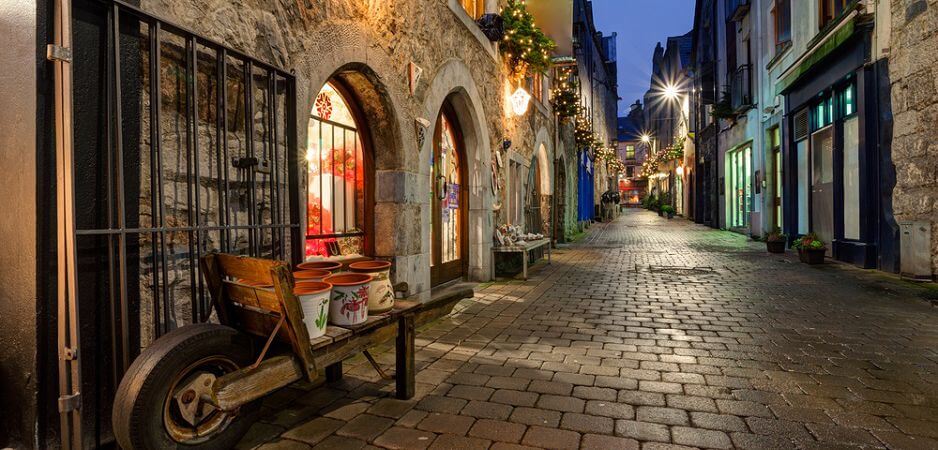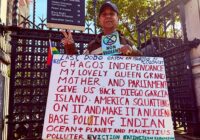The convention was a last chance to resolve Anglo-Irish relations peacefully. Why was it lost?
On July 25, 1917, the Irish Convention convened in Trinity College to make what would prove be the final, nonviolent attempt to establish relations between Ireland and Britain on an All-Ireland basis. Some issues the convention tried to settle 100 years ago still divide us today:
1) Should partition be temporary or permanent?
2) To what extent should education be denominational?
3) Should Ireland be free to set its own tariffs on imports, or should Ireland and Britain be in a customs union?
4) In a 32-county Ireland, what protection might there be for Unionist interests?
The convention was widely representative. The biggest group in was the Irish Parliamentary Party, and John Redmond was among the members. It was Redmond who had suggested a convention, when he rejected a suggestion by the British government that Home Rule be introduced for the 26 counties only, with the position of the six counties left aside for the time being.
The Ulster Unionists were present, led by one of their members of parliament, J.M. Barrie. Southern Unionists also had representation, and their leading figure was Lord Midleton. There were six representatives of the Labour movement.
The members included the mayors of major cities, including Belfast; the chairmen of a number of county councils, including the Meath County Council; four Catholic bishops; two Church of Ireland bishops; and the moderator of the Presbyterian Church. Hugh MacDowell Pollock, the president of the Belfast Chamber of Commerce, and William Martin Murphy, the Dublin employers’ leader and owner of the Irish Independent, were also among the members.
Seats were allocated to the Sinn Fein party of Eamon de Valera and Arthur Griffith, but they refused to take them up because the terms of reference of the Irish Convention did not allow for complete separation between Ireland and Britain. Although Sinn Fein was not there, the convention was a unique gathering of Irish people of widely divergent goals.
Whereas previous attempts to resolve the “Irish question” had taken place in Westminster in talks with British politicians, this was a meeting of Irish representatives trying to solve the outstanding issues between themselves, without direct external involvement. In that sense, it was arguably inconsistent of Sinn Fein — with their “ourselves alone” philosophy — not to take part because it would have given them an opportunity to put their case to their fellow Irishmen, without what they regarded as British interference.
HOME RULE
Although the constitutional struggle for Home Rule had been going on for 40 years — and Home Rule had passed into law three years before — the relationship between the Unionist parts of Ulster and the proposed Home Rule government in Dublin remained a matter of deep contention. Ulster Unionists had, six years earlier, armed themselves to resist Home Rule, and they were encouraged in this by the UK Conservative Party who even tried, in 1911, to persuade the British Army not to take any action against the Ulster volunteers. It could be argued that this was a treasonable course for the Conservatives to take.
Notwithstanding this activity, the British Parliament had passed the Home Rule bill into law in September 1914, but its operation was postponed because the Great War had just begun, and it had been felt at the time that all energies should be devoted to winning what many hoped would be a short war. Three years later, when the convention convened to discuss how Ulster might fit into the Home Rule scheme, the war was still going on. Large numbers of Irish soldiers had been killed on the Western Front and in Gallipoli. Conscription had been imposed in Britain and in most belligerent countries, but not in Ireland. This was resented by some in Britain.
The UK also resented the Rising against British rule — supported by Germany — that had taken place in 1916. Many of those involved were still in prison. So, the atmosphere was fraught not just in Ireland, but in Britain too. The Conservative Party, which had gone to such lengths six years prior to oppose Home Rule, was now a predominant part of the UK government, although Prime Minister David Lloyd George was a Liberal.
Despite all these difficulties, Irish nationalist ambitions were high. Partition was rejected on principle, but no very practical ideas were advanced on how to overcome the opposition to the imposition of Home Rule from Dublin in the counties of North East Ulster. There seems to have been an assumption that Britain would force Ulster Unionists to accept Home Rule, but the practicalities of doing this, especially during a war in Europe, were never addressed.
Eamon de Valera, Sinn Fein’s new leader and the recently elected MP for East Clare, offered some remarkably simplistic solutions. He told his supporters in Killaloe that, if Ulster Unionists did not come in under Dublin rule, they would “have to go under.” Later, in Bessbrook Co Down, during a by-election campaign that his party lost, he said: “If Ulster stood in the way of Irish freedom, Ulster should be coerced.”
By attending the Irish Convention, de Valera could have tried persuasion before resorting to the coercion he was threatening. He apparently felt it was simpler for him to blame the British for not coercing Ulster than it would have been to sit down in the convention and try to persuade his fellow Irishmen of North East Ulster to accept some form of agreed Ireland.
John Dillon, the deputy leader of the Irish Parliamentary Party, warned de Valera of what an attempt to coerce Ulster would entail. Speaking in Armagh — of de Valera’s idea that Ulster be forced to “go under” — he said: “Against such a programme Unionist Ulster will fight to the last man living; and to all the other horrors of the situation would be added a civil war as bitter and relentless as that which reduced the country to a desert in the seventeenth century.”
A similar, but less lethal air of unreality prevailed in Southern Unionist circles. They wanted no partition and no Home Rule. The convention was an attempt to reconcile these irreconcilable positions and, given the unpromising conditions, it made some progress. It found a solution to the land question that was subsequently enacted by the Free State government in the 1920s.
 A serious effort was made to agree some form of united Ireland. Ulster Unionists put forward a federal approach, whereby an Ulster regional government would have substantial autonomy but within an All-Ireland framework. Nationalists were not in favor of this. They suggested extra representation (appointed or elected) for Unionists in an All-Ireland parliament. Unionists were not keen on this because they feared that they would still be outvoted, particularly on the issue of tariffs.
A serious effort was made to agree some form of united Ireland. Ulster Unionists put forward a federal approach, whereby an Ulster regional government would have substantial autonomy but within an All-Ireland framework. Nationalists were not in favor of this. They suggested extra representation (appointed or elected) for Unionists in an All-Ireland parliament. Unionists were not keen on this because they feared that they would still be outvoted, particularly on the issue of tariffs.
LESSONS FOR TODAY
Ulster industry wanted continued free trade with Britain, whereas nationalists wanted the power to impose customs duties on some British goods to protect Irish industries. Today, this issue has surfaced once again in the Brexit negotiations as the UK leaves the European Union. In effect Unionists wanted to be in a customs union with the United Kingdom, whereas nationalists did not. Redmond was prepared to accept immediate Home Rule, without the power to levy customs duties, but his supporters were not, and he had to back away from his proposal.
The Irish Convention came close to agreeing a majority report with significant nationalist and Unionist support, but this was stymied by the big German offensive of 1918, which led the British government to propose imposing conscription in Ireland. This threat of conscription led to a crisis that destroyed any hope of agreement.
Looking back, the pity is that a convention of this kind was not attempted in 1911, when Home Rule was first mooted. It might not have led to an agreement, but it might have contributed to a better understanding of the Ulster problem by all shades of Irish nationalism.
The views expressed in this article are the author’s own and do not necessarily reflect Fair Observer’s editorial policy.
Photo Credit: Rihardzz / Shutterstock.com
Support Fair Observer
We rely on your support for our independence, diversity and quality.
For more than 10 years, Fair Observer has been free, fair and independent. No billionaire owns us, no advertisers control us. We are a reader-supported nonprofit. Unlike many other publications, we keep our content free for readers regardless of where they live or whether they can afford to pay. We have no paywalls and no ads.
In the post-truth era of fake news, echo chambers and filter bubbles, we publish a plurality of perspectives from around the world. Anyone can publish with us, but everyone goes through a rigorous editorial process. So, you get fact-checked, well-reasoned content instead of noise.
We publish 2,500+ voices from 90+ countries. We also conduct education and training programs
on subjects ranging from digital media and journalism to writing and critical thinking. This
doesn’t come cheap. Servers, editors, trainers and web developers cost
money.
Please consider supporting us on a regular basis as a recurring donor or a
sustaining member.
Will you support FO’s journalism?
We rely on your support for our independence, diversity and quality.






